The First Infirmary
In April 1743 Dr James Stonhouse and the Reverend Philip Doddridge started a campaign and subscription list to establish a hospital in Northampton. By the end of that year they had raised enough to rent and equip a house in George Row, Northampton and it officially opened in March 1744. It was one of the first six voluntary hospitals established in England.
Image reproduced from an engraving on a 1747 town map by Noble and Butlin.
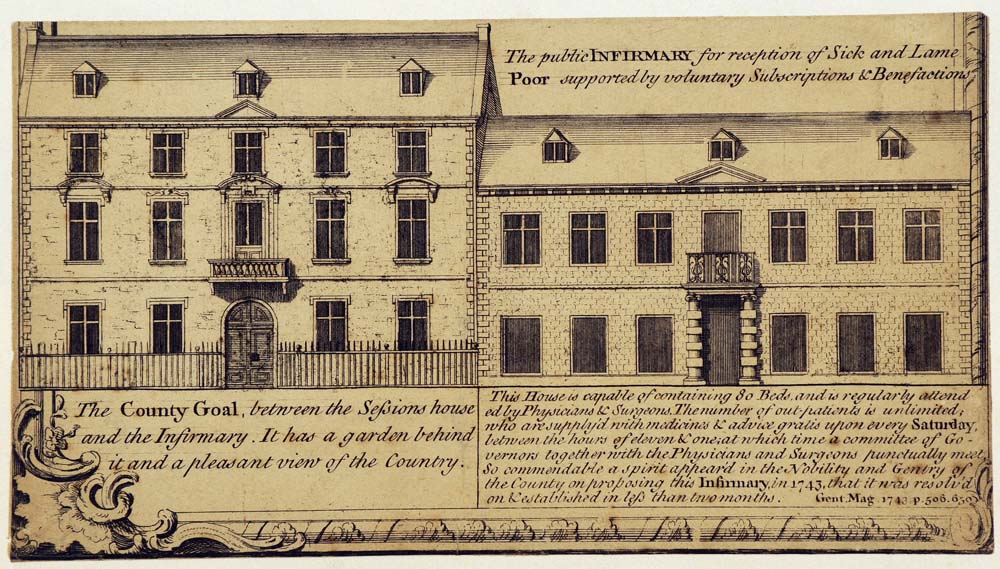
The Second Infirmary
It was built on a piece of land called ‘Northampton Fields’ and opened in 1793 with 106 beds. This image is reputed to be by the painter WF Wells and the engraver is unknown. The reproduction seen here is by kind permission of Sir Gyles Isham. The horse is on the Billing Road, St Giles Church on the right and All Saints Church in the background.
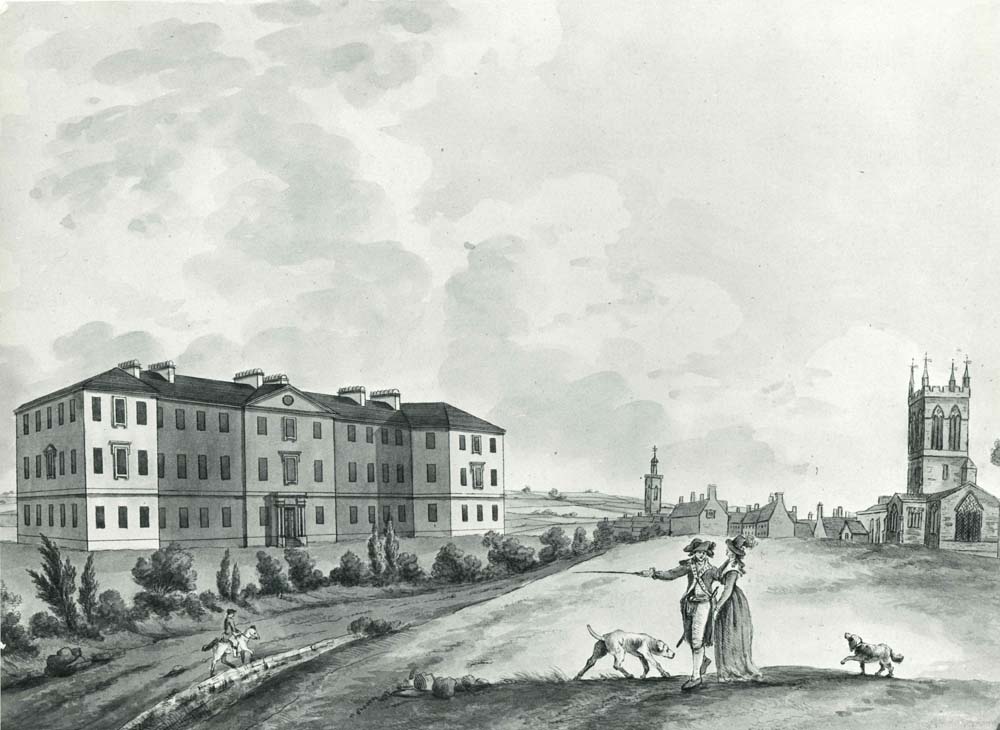
Below - A view of the Billing Road aspect of the hospital in 1910.
From the Alan Burman collection.
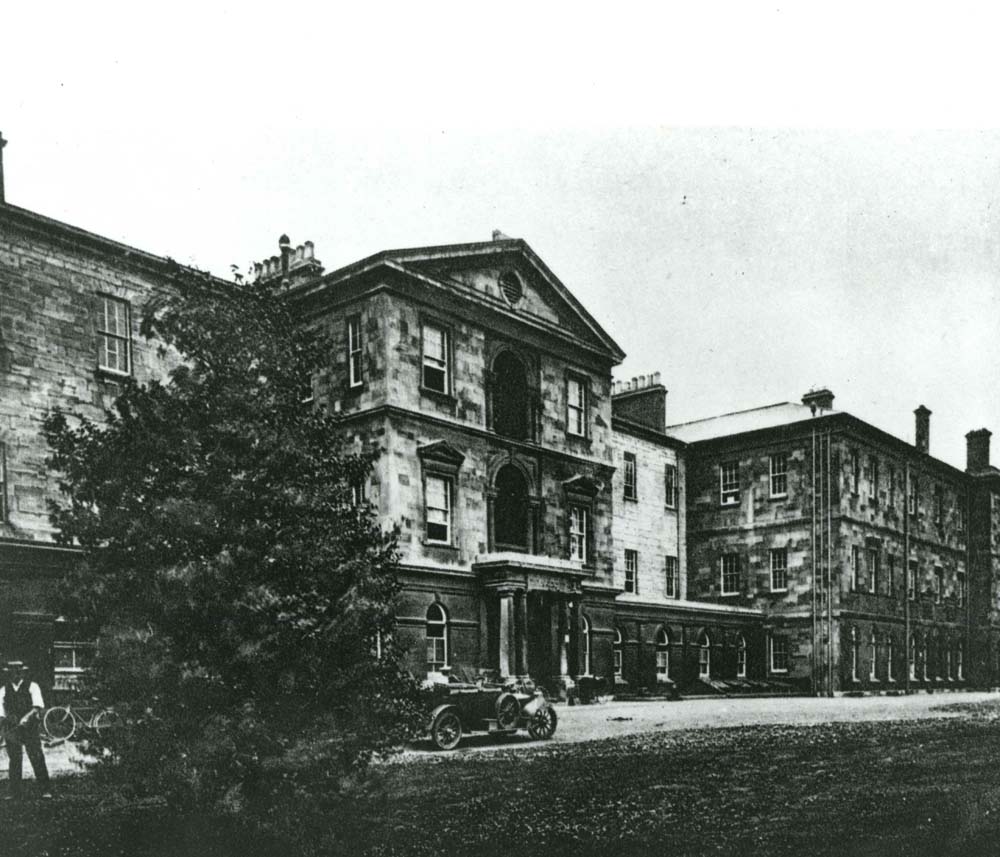
Crockett Wards
This block was built in 1924 at a cost of £14,424. Sir James Crockett, a local shoe manufacturer donated £5,000 of this total. The ground and first floor were bedrooms and sitting rooms for the staff. The block opened in 1925 and balconies were added in 1932. These wards were used for infected cases and had their own operating theatre. The balconies would be utilised by patients with tuberculosis, enabling the beds to be pushed out during the day as part of their treatment. This block has now been replaced by the Centre for Elderly Medicine.

Aerial View 1948
This is an interesting look at the hospital site as it started to expand over the years. Views in the background across the Billing Road to rows of terraced houses and in the foreground the foundations of Robert Watson and Windsor wards.
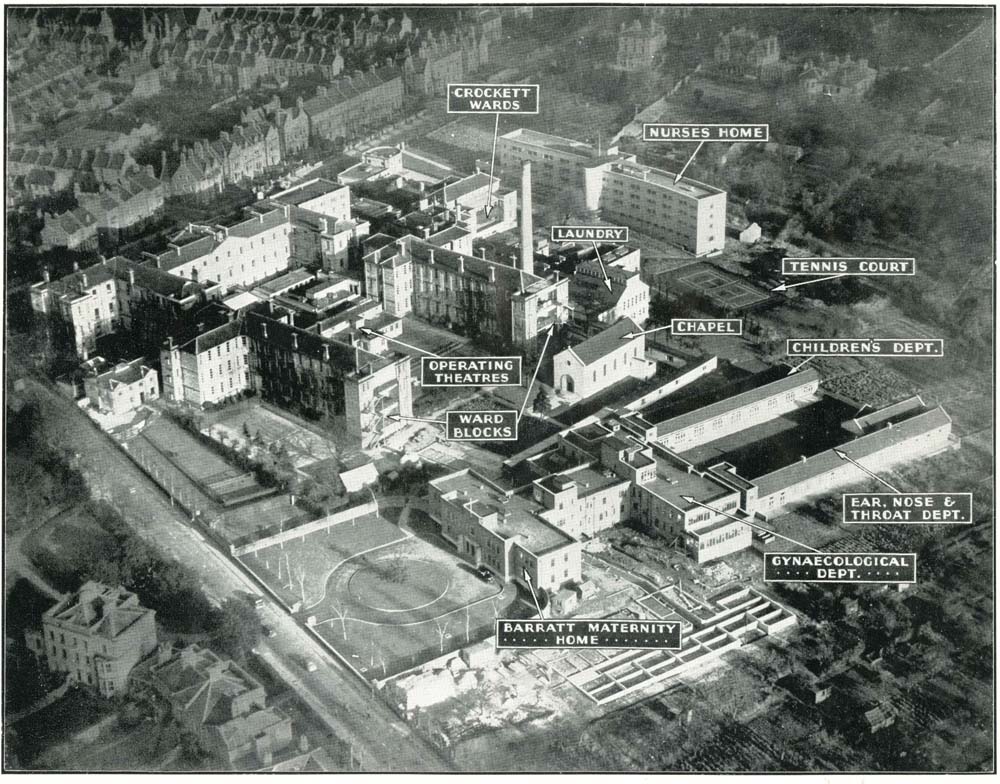
Hospital Chapel
A legacy of £2,000 had been left by a Miss Butterfield towards building a hospital chapel. By 1939 Canon JR Hussey had raised this total and the chapel was built by H Martin Ltd. at a cost of £4,720. It was dedicated by the Lord Bishop of Peterborough on 30th November 1940. This building has now been taken down and replaced by the hospital chapel of St Luke located inside the hospital.
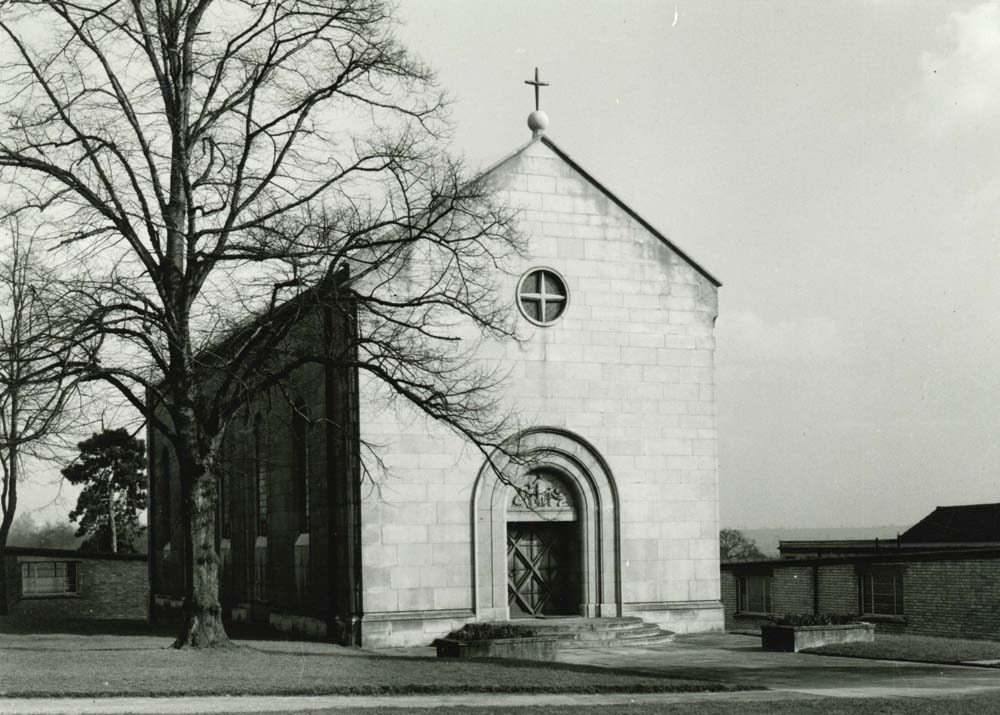
Return to Our History main menu.